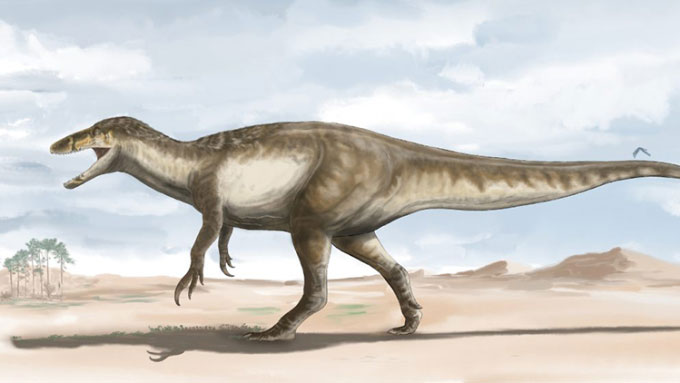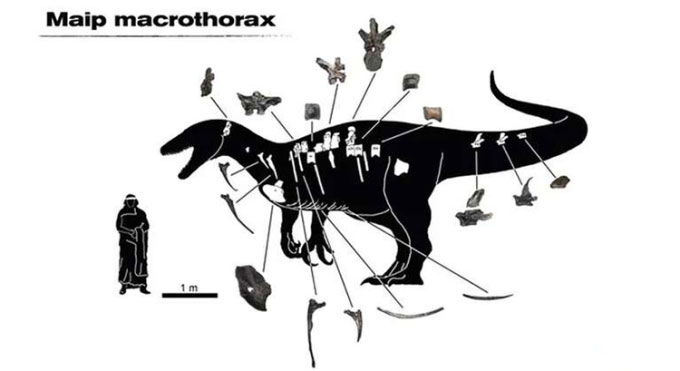70-Million-Year-Old Fossil Unearthed in Southern Argentina Reveals Previously Unknown Giant Predator Dinosaur.
According to a study published in the journal Nature on April 26, the new species has been named Maip macrothorax, which lived during the Late Cretaceous period in what is now Patagonia, spanning the territories of Argentina and Chile. The fossilized remains of this creature were excavated at Estancia La Anita, located 30 kilometers southwest of the town of El Calafate in Santa Cruz Province, Argentina.

Reconstruction of the newly discovered giant carnivorous dinosaur. (Photo: CONICET)
Fossil analysis indicates that Maip macrothorax measured between 9 and 10 meters in length and weighed approximately 5 tons, making it the largest member ever described in the carnivorous dinosaur genus Megaraptor.
To support that weight, Maip’s spine consisted of enormous vertebrae connected by a system of muscles, tendons, and ligaments. This structure allowed the creature to stand upright on its hind legs after moving.
The newly discovered predator also had two small forelimbs, reminiscent of the Tyrannosaurus rex and Spinosaurus. However, while the Tyrannosaurus rex had large, heavy bones, the bones of the Megaraptor contained numerous internal cavities, making them significantly lighter.

Remains of Maip macrothorax found in Argentina. (Photo: CONICET)
Fossils of Megaraptor species have been discovered in Asia, Oceania, and South America, but they are most abundant in the Patagonia region of Argentina.
This research was conducted by a team of paleontologists from Japan and the National Scientific and Technical Research Council (CONICET) of Argentina.


















































